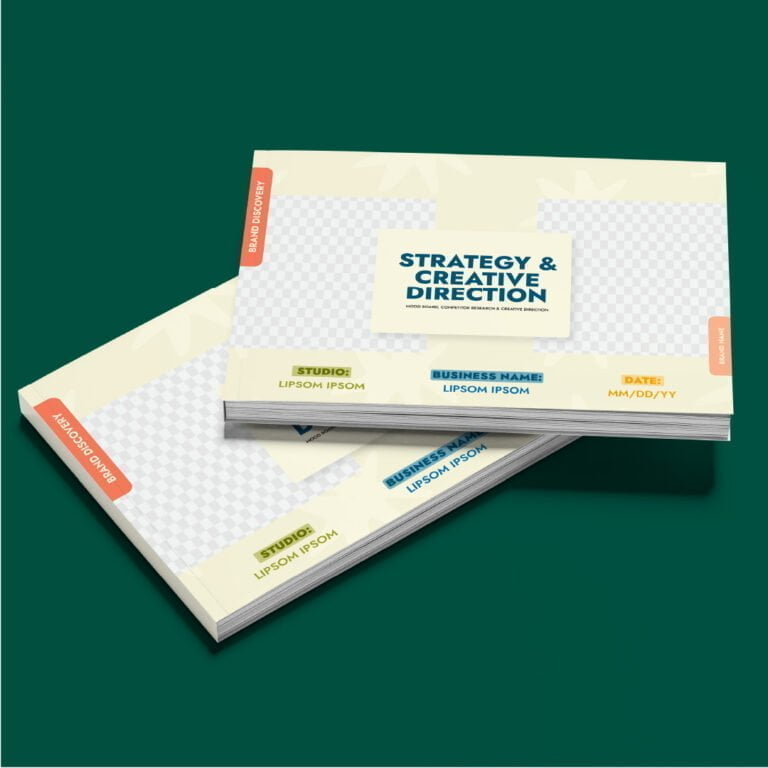The Power of Color in Marketing and Branding
Specific colours come to mind when we think of the most successful brands in the world. McDonald’s golden arches, Coca-Cola’s red and white logo, and Starbucks’ iconic green mermaid share one thing: they use colour to establish their brand identity.
But why is colour so important in marketing and branding? The answer lies in the psychology of colour.
Colours can evoke emotions and influence behaviour, making them a powerful tool for businesses looking to connect with consumers. For example, red is associated with excitement, passion, and urgency.
It’s no wonder that many fast-food chains like McDonald’s and KFC use red in their logos and marketing materials. These colours can create a sense of urgency that encourages customers to purchase quickly.
On the other hand, blue is often associated with trustworthiness, reliability, and calmness, and this makes blue a popular choice for financial institutions like American Express or Visa.
Financial institutions want to convey stability and credibility, which can help build customer trust. In short, understanding how different colours impact emotions can be crucial for creating effective branding strategies that connect with your target audience on a deeper level.
The Basics of Color Psychology
Colour psychology studies how colours can impact human behaviour and emotions. The idea behind colour psychology is that different colours can evoke other emotions or feelings within people.
For example, seeing the colour red can make people feel alert, excited or even hungry. This is why many fast-food chains use red in their branding and marketing materials.
Colours have different meanings and connotations, influenced by cultural, social and personal experiences. Understanding these associations is essential when choosing which colours to use in marketing campaigns.
Overview of the Different Emotions and Meanings Associated with Each Color
Each colour has its own unique set of emotions, meanings and connotations associated with it. Here is a brief overview of what each colour symbolizes:
Red: Red is often associated with passion, love, energy and urgency. It can also signify danger or warning.
Orange: Orange represents optimism, enthusiasm, warmth and friendliness. It’s often used to denote affordability.
Yellow: Yellow represents happiness, joy and optimism. However, it’s also associated with caution or warning.
Green: Green represents nature, growth, balance and calmness. It’s often used in brands related to health products or eco-friendly items.
Blue: Blue represents trustworthiness, reliability and calmness. Financial institutions often use blue in branding to evoke a sense of stability.
Purple: Purple symbolizes royalty, luxury as well as creativity. Pink: Pink represents femininity, sweetness, and romantic love.
Understanding the basics of colour psychology will help you choose the right colours to evoke specific emotions and meanings in your target audience. It is essential to remember that cultural differences may also affect colour association. Hence, it’s necessary to research and understand any target market’s cultural context before choosing colours for marketing or branding purposes.
The Role of Color in Branding
Colours Create and Define Your Brand’s Identity
Branding is more than just a logo or a tagline; it’s about building an emotional connection between your target audience and your brand. One crucial aspect of branding is using colours, which can help define and create a brand identity that resonates with consumers.
Colours are powerful communication tools that evoke emotions, attitudes, and beliefs about a brand. The right colour palette can make your brand stand out from competitors and help consumers remember it better.
Examples of Successful Brands That Have Used Colors Effectively
Many well-known brands have effectively used colours to establish their brand image. One example is Coca-Cola, which has become synonymous with its iconic red colour.
The red colour elicits excitement and passion, qualities that the Coca-Cola brand wants to convey. Similarly, McDonald’s yellow symbolizes happiness, joy, optimism, and energy – all emotions the fast-food chain wants its customers to feel when they enter one of its restaurants.
Another example is FedEx which uses purple in its logo design; this shade represents luxury and sophistication while also being associated with reliability – critical attributes for a delivery company. UPS also uses brown in their branding; this earthy tone conveys stability while symbolizing trustworthiness.
Choosing the right colours for your brand can be daunting, but understanding the psychology behind each colour may help inform a better decision-making process. Incorporating colours into your branding strategy could set you apart from the competition, so consider how you want your customers to feel when they see your logo or visit one of your stores or websites.
Choosing the Right Colors for Your Brand
Tips on selecting colours based on your target audience, industry, and desired message
When choosing the right colours for your brand, there are several factors to consider. One of the most important is your target audience. Different age groups, genders, and cultures may have other preferences regarding colour.
It’s essential to research what colours are most appealing to your target audience and use them accordingly. Another factor to consider is your industry.
Each industry has its own set of standard colours that consumers associate with it (e.g., red and yellow for fast-food restaurants). While you don’t have to follow these standards, you must know them when choosing your brand’s colours.
You need to think about the message you want your brand to convey. Do you want it to feel luxurious and sophisticated?
Or playful and fun? The right colour can make all the difference in conveying this message.
Importance of considering cultural differences when choosing colours for global brands
If you’re creating a global brand, it’s crucial to understand that different cultures may have vastly different associations with specific colours. For example, in Western countries, white often symbolizes purity or innocence.
However, white is associated with death or mourning in many Eastern countries like China and Japan. Similarly, red is often associated with love or passion in Western cultures but can signify danger or warning in some Asian countries.
You must research what each colour means in different cultures before finalizing your brand’s colour scheme if you plan on marketing globally. By taking into account these factors – including target audience preferences by demographic group or region as well as industry standards – you can choose a colour palette that will help create a strong visual identity for your brand while also resonating with consumers across different countries and cultures.
Colour Combinations in Marketing Materials
When it comes to marketing materials such as logos, websites, and advertisements, the combination of colours can influence how customers perceive a brand. Different colour combinations can evoke other emotions and reactions from consumers, so choosing the right ones is essential to convey the desired message.
The Power of Color Combinations
Colour combinations in marketing materials are essential because they affect how customers feel about a brand. For example, blue and green are often used together to convey a sense of calmness and relaxation. On the other hand, red and yellow are often used together to create a sense of excitement or urgency.
The right colour combination can also help improve brand recognition and recall. When customers see specific colours paired together repeatedly in marketing materials, they start to associate those colours with the brand itself.
Examples of Effective Color Schemes
There are many examples of effective colour schemes used in marketing materials. One classic example is Coca-Cola’s use of red and white in its logo and branding.
The combination creates a feeling of energy and excitement synonymous with the brand. An example that illustrates how colour combinations can convey different messages based on context is McDonald’s.
The giant fast-food uses red and yellow – two colours associated with urgency – for its branding because they want customers to act quickly while ordering food at their restaurants. In contrast, Apple uses white space combined with sleek black fonts for their advertisements, conveying simplicity, sophistication, and elegance – traits associated with Apple products.
The right colour combination in marketing materials can create powerful associations with your brand image, inspiring customer loyalty or driving sales growth. It’s essential for business owners who want success in marketing and branding to take the time to choose a colour combination that works for their brand’s message, target audience, and industry. By doing so, they can create marketing materials that effectively convey the right message and evoke the desired emotions from their customers.
The Impact of Color on Consumer Behavior
Colour is a potent tool in marketing and branding, and it can influence people’s emotions and decision-making processes in ways they may not even be aware of. Studies have shown that up to 90% of snap judgments about products can be based on colour alone.
Discussion on how specific colours can influence purchasing decisions
Different colours have different meanings and evoke other emotions. For example, blue is often associated with trust and dependability, while red can create a sense of urgency or excitement.
Green is often used to convey a sense of health or environmental friendliness. You can tap into these emotional responses and influence purchasing decisions by strategically choosing the right colours for your brand.
Case studies showing the effects of colour choices on consumer behaviour
Countless case studies demonstrate the impact that colour has on consumer behaviour. One example is the fast-food chain McDonald’s, which uses bright yellow and red in its logo to create a sense of energy and urgency, encouraging customers to make quick food choices. Another example is the tech giant Apple, which uses sleek silver and white branding to convey a sense of sophistication and elegance.
In one study by HubSpot, researchers found that changing the call-to-action button from green to red resulted in a 21% increase in conversion rates. Similarly, another study by The Paper Worker found that changing packaging from blue to black resulted in a 50% increase in sales.
Colour plays a vital role in marketing and branding. By understanding its power and using it strategically in your marketing materials, you can create a solid emotional connection with your target audience and drive sales for your business.
Conclusion
The Power of Color in Your Marketing and Branding
It’s no secret that colour plays a huge role in effective marketing and branding. The psychology of colour is a complex yet fascinating topic that can significantly impact consumer behaviour.
By understanding the emotions and meanings of each colour, you can choose the right colours to convey your brand message to your target audience. Consider your colour choices when creating a logo, designing a website, or developing an advertising campaign.
Creating Emotional Connections with Your Customers
Colours can create emotional connections with your customers, ultimately influencing their purchasing decisions. Using colours carefully and strategically in your marketing materials can build brand recognition and customer loyalty. Keep in mind that cultural differences must also be taken into account when targeting global markets.
The Future of Color Psychology in Marketing
As technology evolves, we will likely see new possibilities for incorporating colour psychology into marketing strategies. Virtual reality experiences may allow marketers to fully immerse consumers into environments surrounded by certain colours that evoke specific emotions or associations with brands.
The limits are only up to the creativity and innovation of marketers. Understanding the psychology of colour is critical for successful branding and marketing campaigns.
By choosing the right colours for your brand image and message, you can establish an emotional connection with your customers that will help drive sales and build long-lasting relationships. So go forth armed with this knowledge – let the power of colour work for you!









